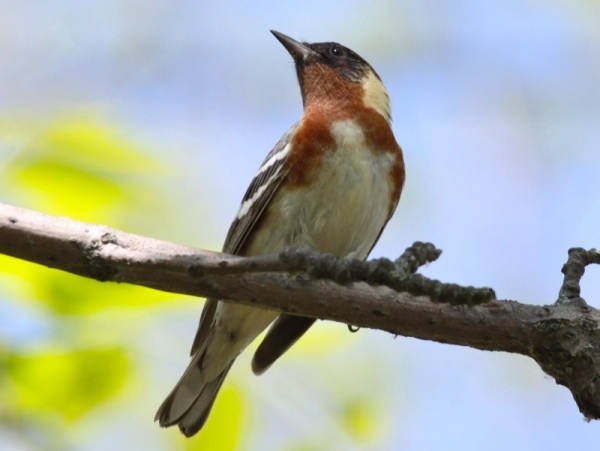
Birders flock to Magee Marsh, Ohio in May because the birds do, too. For us it’s exciting to see them so close. For them it’s an important rest stop on their long journey from Central or South America to Canada.
Songbirds migrate overnight and stop before dawn to rest for the day. They may be leisurely in the fall but they make the journey faster in spring. This bay-breasted warbler travels from Panama or northern South America to Canada, a journey of at least 2,400 miles, and he does it in as little as 17 days. His longest leg is more than 500 miles non-stop across the Gulf of Mexico.
Rest stops are key.
Imagine you’re driving each night on a long distance journey. From experience, or because you’re traveling in a group (i.e. flock), you’ve picked the rest stops in advance. You’re on a tight schedule and you’re not going to stop often. A few of the rest stops are the last food and fuel for hundreds of miles. No problem. You’ve been there before and you know those places are good.
But what if you arrive one night and a crucial rest stop is gone… destroyed? No gasoline, no food and you’re nearly out of both. You have no idea where to find a substitute and you’re already tired. If you’re a bird, this emergency can kill you.
That’s why the warblers at Magee Marsh don’t seem to care about people. They’re hungry and they don’t have much time. They’re fueling up so they can leave tonight for Canada.
And that’s why the National Audubon Society, the American Bird Conservancy, the Nature Conservancy, and the Western Hemisphere Shorebird Reserve Network are all working to preserve stopover sites for migratory birds.
(photo by Chuck Tague)
I wrote about one of those rest stops out here, it’s scary.
http://burghtoburque.wordpress.com/2013/05/05/taco-bell-marsh/